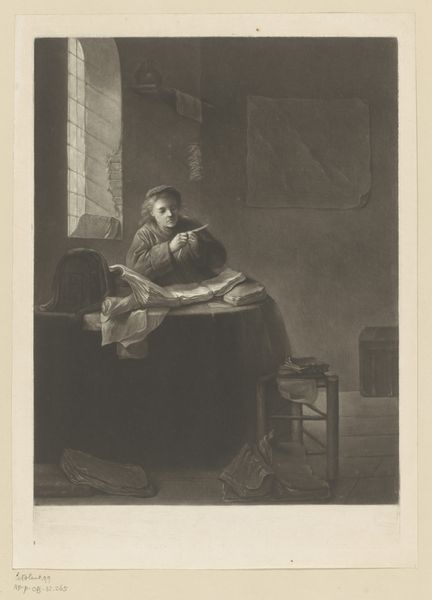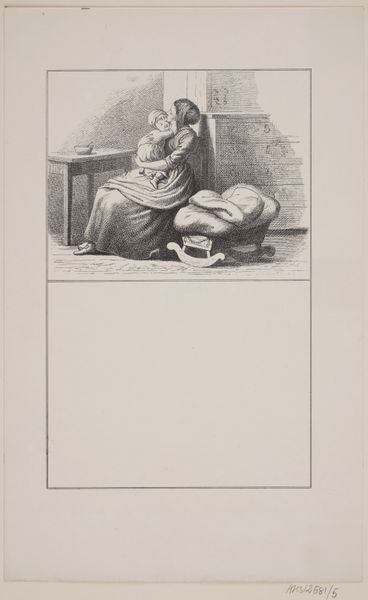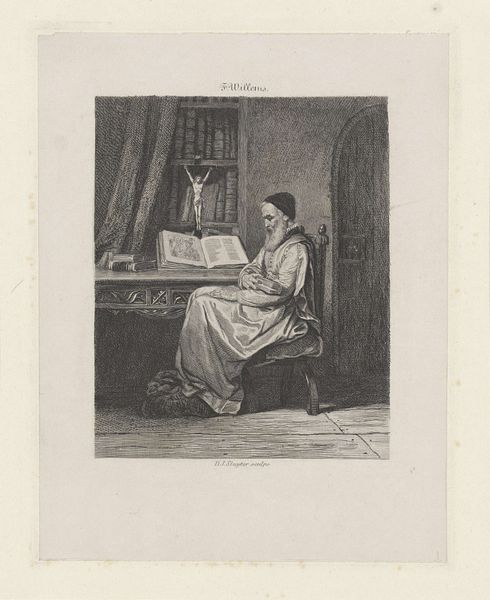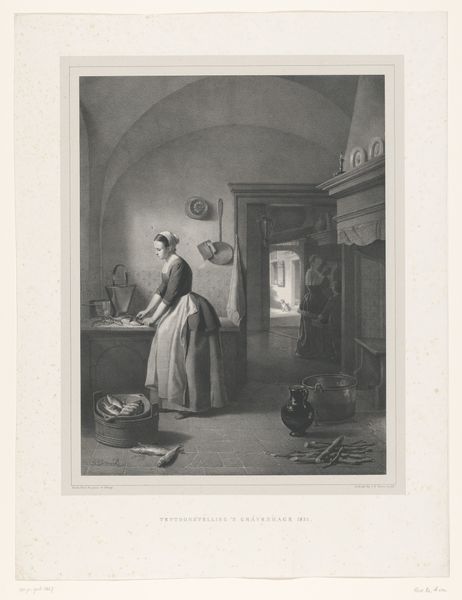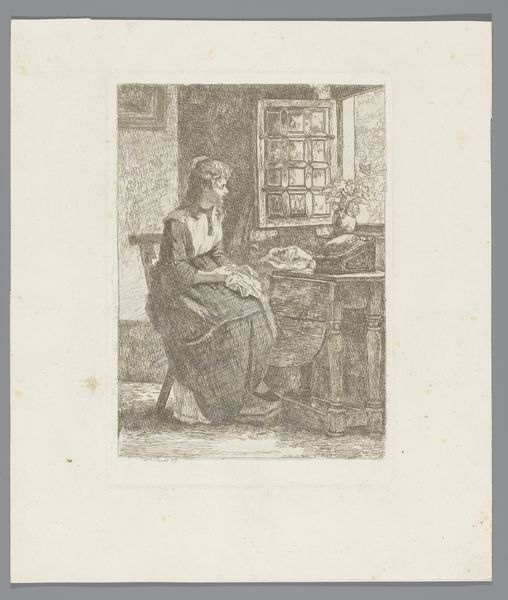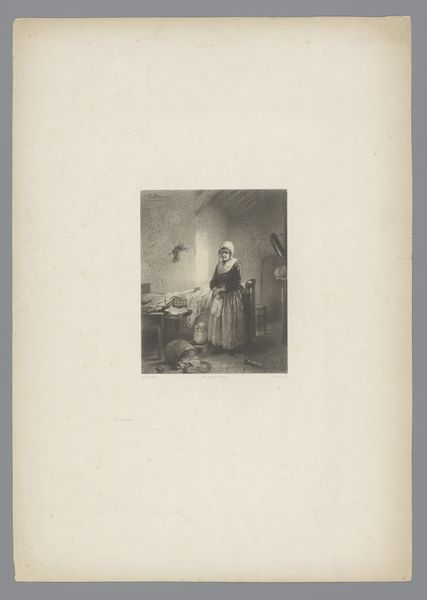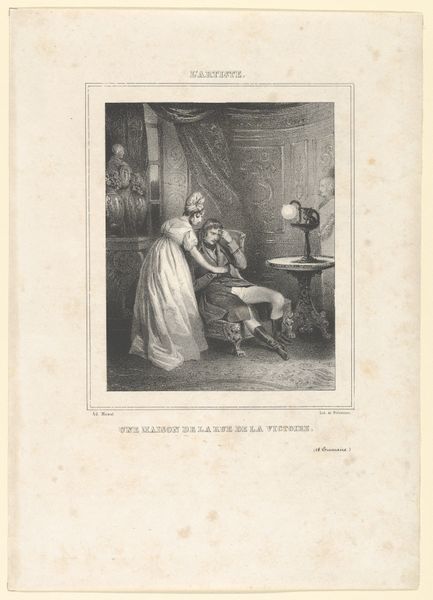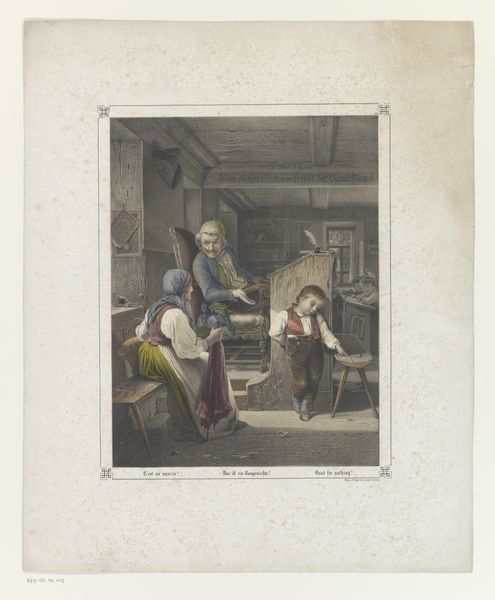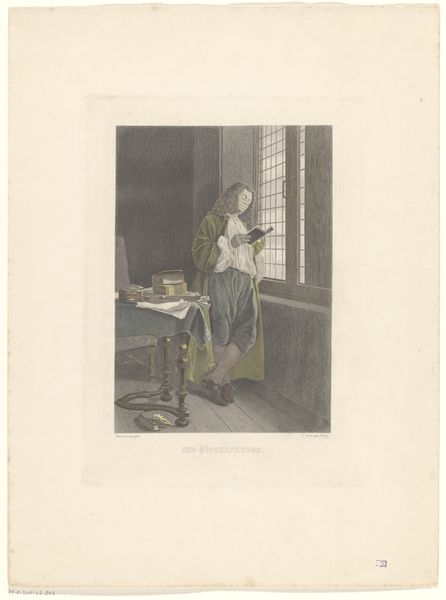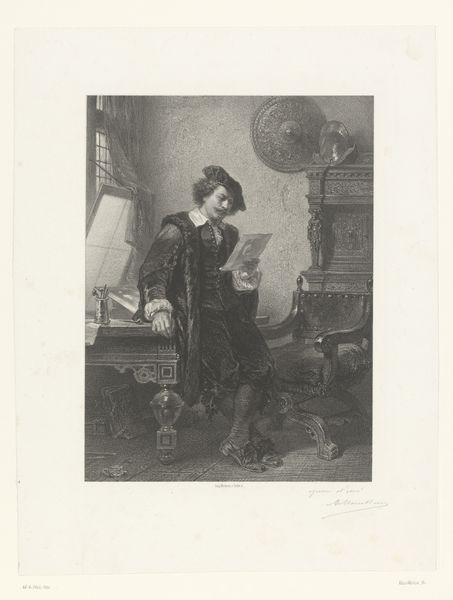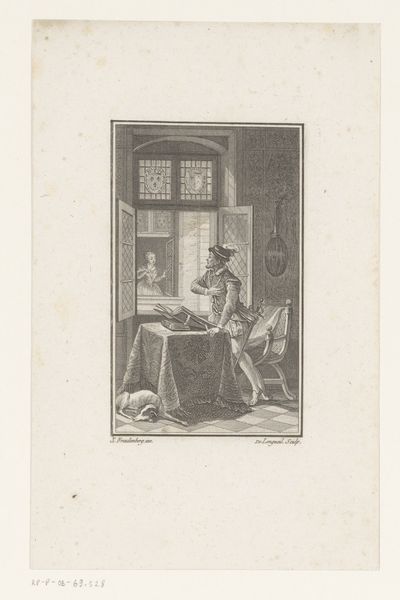
Dimensions: height 552 mm, width 440 mm
Copyright: Rijks Museum: Open Domain
Editor: This is “Hindeloopen vrouw in kerkinterieur” by Jan Bos Wz., created sometime between 1842 and 1897. It’s a watercolor drawing that captures a quiet, almost somber scene within a church. What strikes me is the woman's contemplative pose. How do you interpret this work? Curator: The somber tone immediately speaks to broader issues of gender and religious expectation. This work opens a fascinating window into the lives of women in 19th-century Dutch society. Notice how the woman’s dress and placement within the church highlight a rigid social hierarchy. Consider what her gaze might signify in a context where female agency was heavily policed. Do you think she blends into the scene, or does she stand apart? Editor: I think she both blends and stands out. She's part of the congregation, but the detail focused on her face and clothing draws attention, doesn't it? It’s like the artist wants us to see her as an individual within a community. Curator: Exactly! The artist subtly acknowledges the woman's individuality while reminding us of the social constraints that define her existence. The church setting itself can be viewed as a space of both refuge and restriction for women. How might religious spaces reinforce or challenge existing power structures? Editor: I never thought of it that way, but that's such a compelling point! It makes me consider the complexities of faith and identity in this historical moment and how social structures influence individual experience. Curator: Precisely! This watercolor, therefore, is not simply a genre scene. It prompts a deeper engagement with issues of gender, class, and the performative aspects of religious life. Reflecting on these dynamics allows us to connect historical realities with present-day conversations around identity and belonging. Editor: Thank you. That really makes me appreciate the layered meanings an image can have. It encourages you to view art as part of complex systems.
Comments
No comments
Be the first to comment and join the conversation on the ultimate creative platform.

